This article contains affiliate links. We may earn a small commission if you purchase via these links.
How much should you spend on a scope for your AR-15?
How do you choose between a scope or a red dot?
What is the best scope for an AR-15?
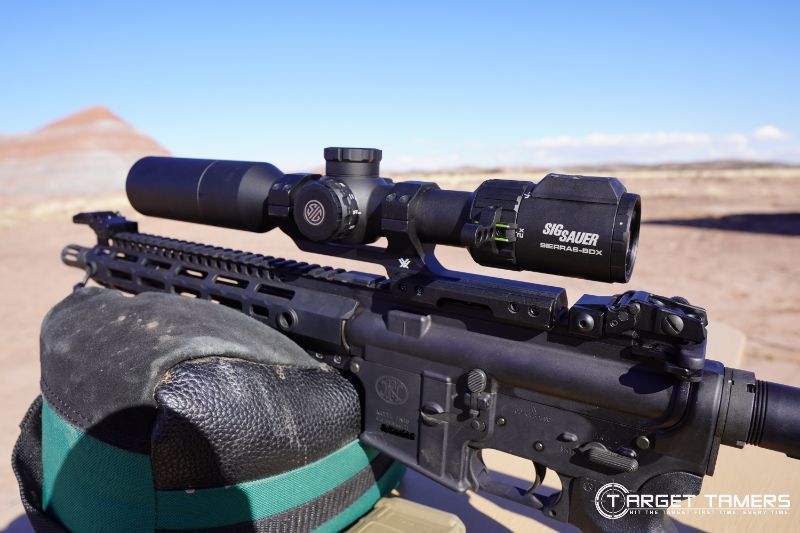
I went through and compiled a list of the best AR-15 scopes based off performance, quality, and configuration.
I set a criteria mostly of LPVO scopes intended for home defense to professional applications as well as affordable options for the cost-conscious buyer.
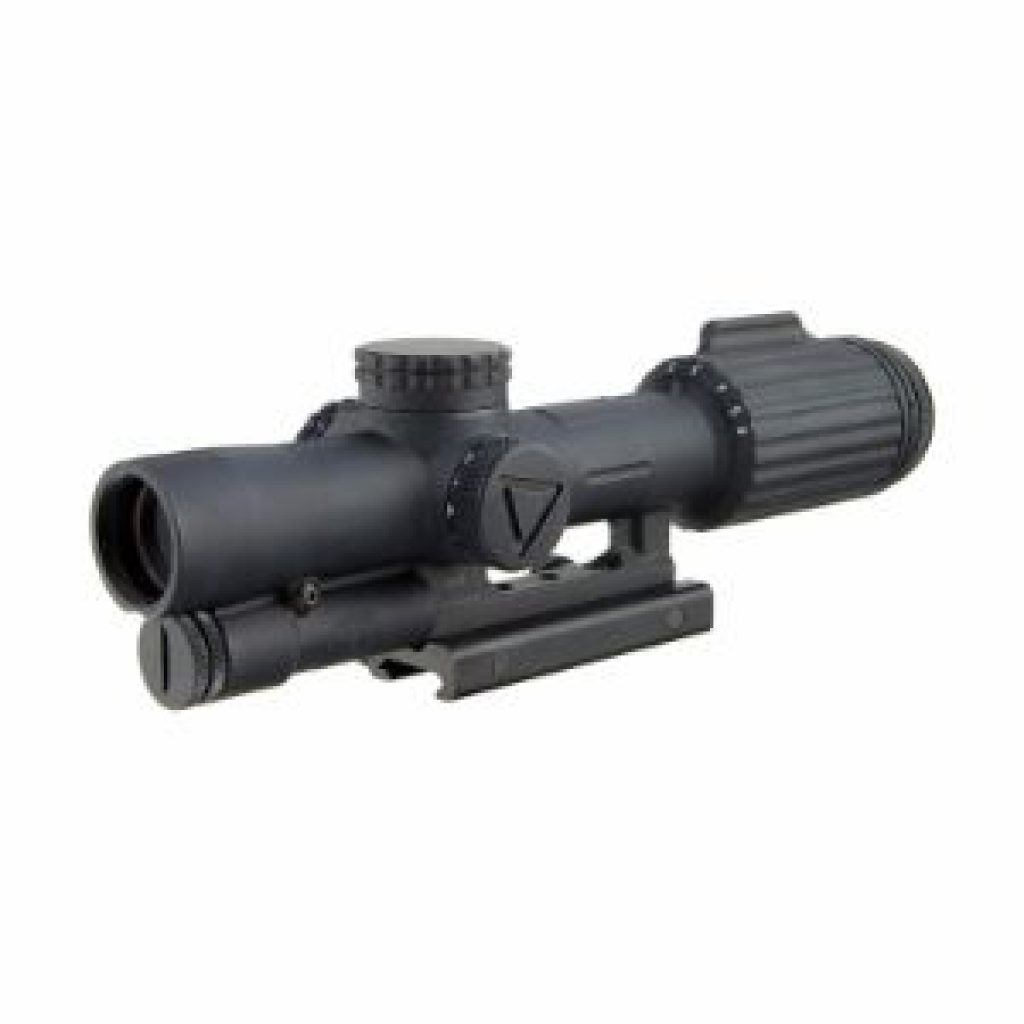
Trijicon VCOG 1-6x24
Excellent glass clarity
FFP reticle
4" eye relief
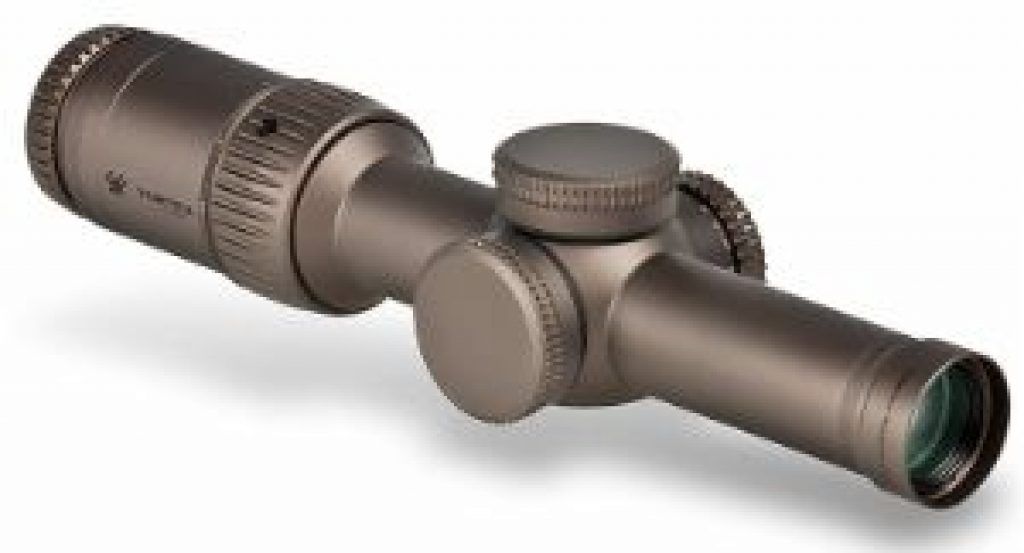
Vortex Razor HD Gen II-E 1-6x24
SFP illuminated reticle
Wide adjustment travel
Wide diameter turrets
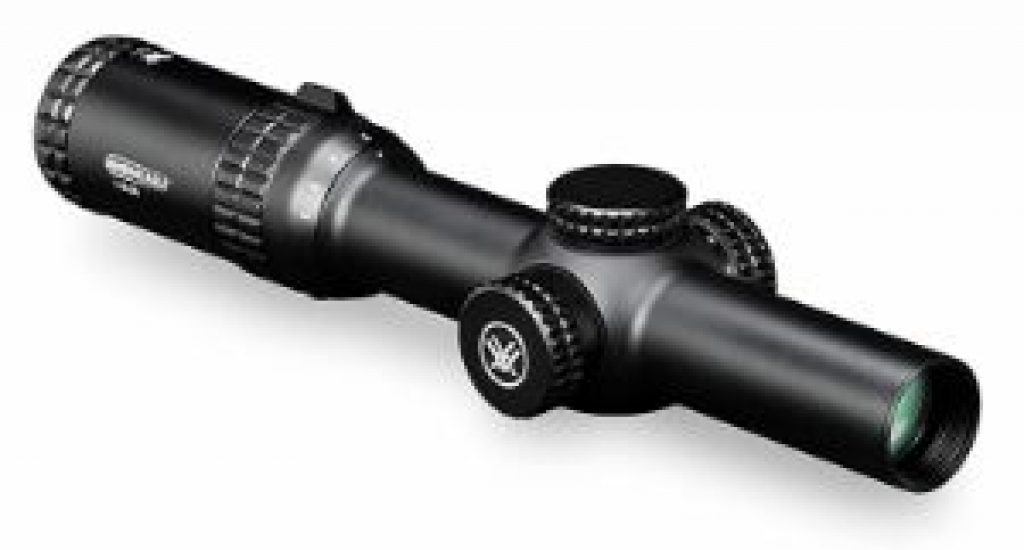
Vortex Optics Strike Eagle 1-6x24
Glass-etched SFP reticle
0-600 yards
30 mm tube
Why Trust Us?
After hundreds of hours of hand-testing scopes in the field and at the range, and thousands more hours researching and writing about them, we feel we earn the title of experts when it comes to optics!
We purchase as many of the optics for our tests as possible, and run them through their paces to make sure they will perform at the range and in the field.
Our combined decades of experience from plinking and hunting, to big game hunting and competitions has been integral in putting together this round-up of the best AR-15 scope.
Get the inside scoop on how we test optics here.
Top AR-15 Scopes & Optics
To start with, we're letting you know from the get-go that we will use the terms AR 15 (ArmaLite AR-15) and MSR (Modern Sporting Rifle) interchangeably throughout this post.
If you've been building your AR 15 from scratch, you'll appreciate the diversity of the optics market when it comes time to mount your newly-built rifle with a scope. The thing about MSRs? They're extremely modular and customizable to perform for your needed application. So, what is it you're looking to do?
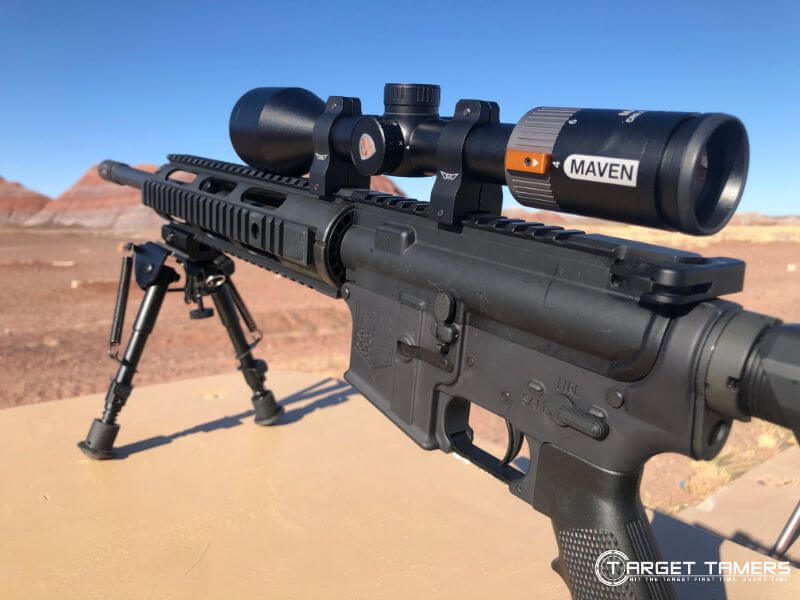
Uses for An AR-15 Optic:
- Plinking/Recreational shooting
- Target shooting
- Small-game, Varmint, Predator, and Big-game hunting
- 3-Gun, Competition shooting
- Tactical, Military, Law Enforcement use
- CBQ to mid-range shooting
- Home defense, Surveillance, Security use
- Night vision, night hunting, night surveillance use
The intended use for your MSR will guide your scope requirements from scope dimensions, build quality, and budget to reticle style, magnification, and added features. As you can see, there is no one-size-fits-all scope for your rifle.
But, what about the red dot versus scope debate?
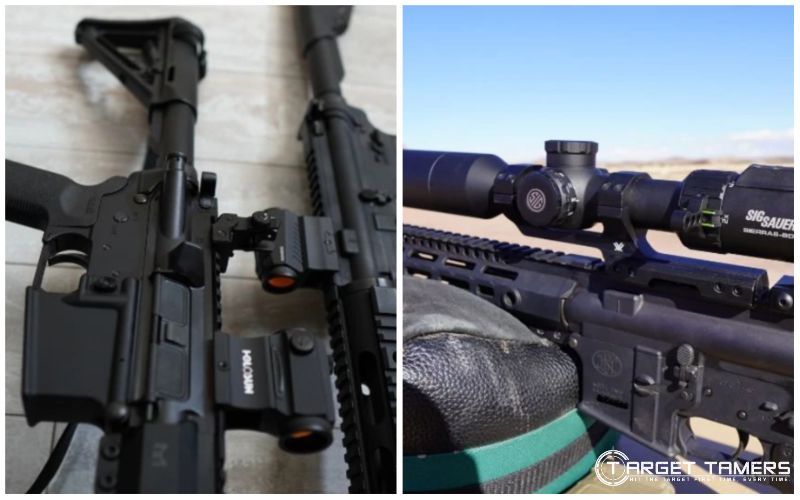
Red dots are fast and are excellent for CQB (close quarter battle) needs. At the same time, a low powered 1-4x, 1-6x, or 1-8x scope on an AR 15, especially one with an illuminated reticle or center dot, can certainly offer the same advantages, plus some, to provide versatility to your MSR system.
We may tend to be biased towards low power variable (LPV) scopes, but they also come with tradeoffs to red dots. Apples and oranges? Leaving this discussion for another day, remember to be application-specific for your needs.
Since we can't read your mind or presume to know what you're up to, we'll just lay out the lineup and you can choose what scope or sight speaks to you.
| IMAGE | PRODUCT | DETAILS | |
|---|---|---|---|
| Trijicon VCOG 1-6x24 |
| CHECK PRICE | |
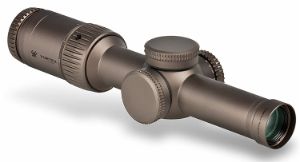 | Vortex Razor HD Gen II-E 1-6×24 |
| CHECK PRICE |
| Trijicon ACOG 4X32 BAC |
| CHECK PRICE | |
 | EOTech Vudu 1-6x24 FFP |
| CHECK PRICE |
| Trijicon TR24R AccuPoint 1-24x24 |
| CHECK PRICE | |
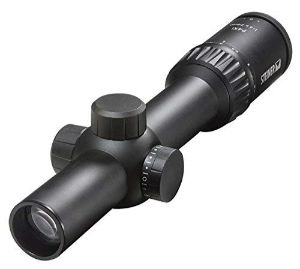 | Steiner P4Xi 1-4x24 |
| CHECK PRICE |
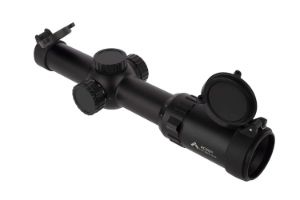 | Primary Arms Gen III 1-6X24 |
| CHECK PRICE |
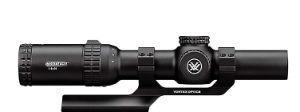 | Vortex Strike Eagle 1-6x24 |
| CHECK PRICE |
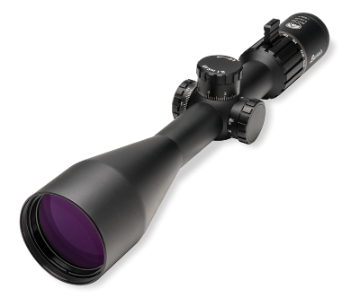 | Burris RT-25 5-25x56 |
| CHECK PRICE |
 | Zeiss Conquest V4 3-12x56 |
| CHECK PRICE |
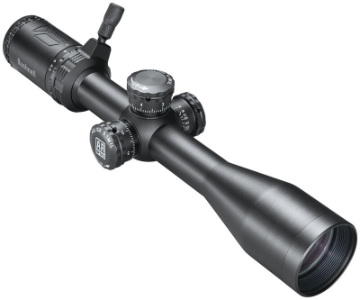 | Bushnell AR Optics 4.5-18x40 |
| CHECK PRICE |
 | Burris XTR II 5-25x50 |
| CHECK PRICE |
12 Best AR-15 Scopes in 2024
While the wide-ranging lineup of scopes below is by no means a comprehensive list, we've provided some of the best scopes that have been rated and tested by AR owners just like yourself.
However, if you are looking for something that fits a specific budget or hunting activity, be sure to also check out some of the other lists (below) we have compiled to find the AR-15 scope perfect for your needs:
- Best Scope for AR 15 Under $100
- The Best Scope for Your AR-15 Under $200
- Best AR-15 Scopes For Coyote Hunting
- Best Night Vision AR-15 Scopes
- Best Scopes For AR-10 (Including Tactical Scope for AR-10 .308 SHTF)
1. Trijicon VCOG 1-6X24 - Best Overall
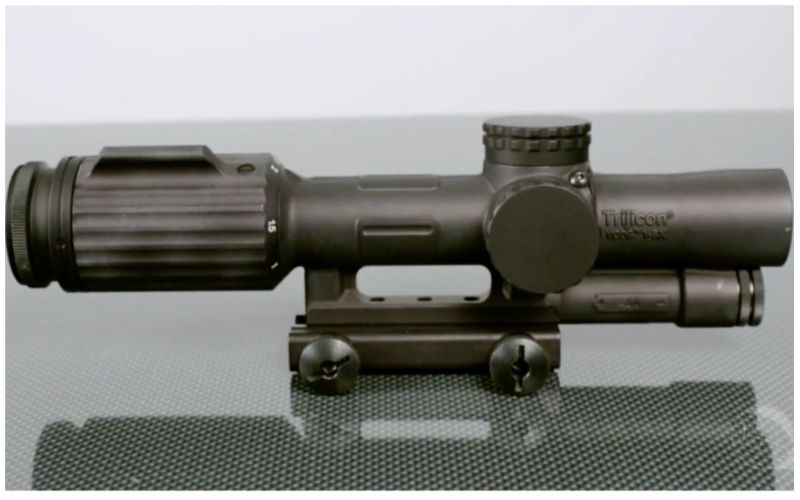
Trijicon brought the highly praised reliability of the ACOG to the table and combined it with variable power to give birth to the VCOG – the Variable Combat Optical Gunsight. To demand the absolute best in performance and quality requires the most generous budget you can come up with.
Pros:
- Trijicon quality
- Excellent glass clarity
- FFP reticle
- Illuminated reticle
- 4” eye relief
Cons:
- Price
Trijicon scopes are known for their close to indestructible build quality. Having been made from forged aluminum alloy, it’s tough, strong, and ready to withstand abuse from hunting, patrol/duty, and competition use.
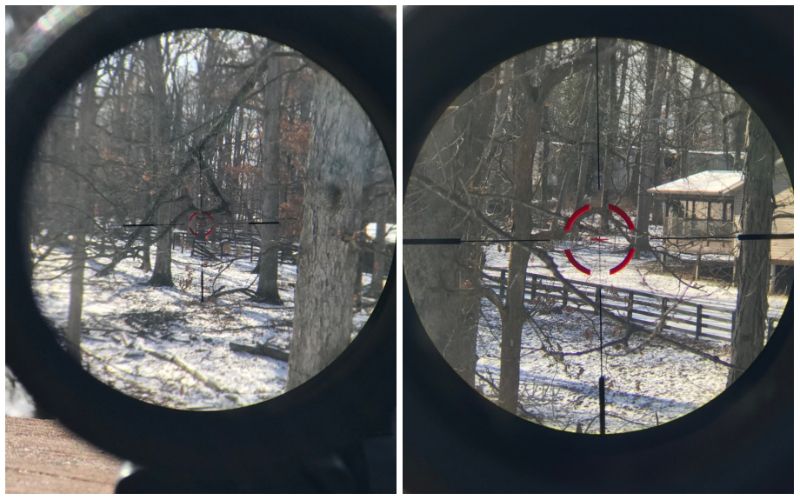
The VCOG is an LPVO through and through with its 1x power for CQB performance with illuminated reticles in the first focal plane (FFP). I've always liked throw levers, and the integrated fin makes things easy to shift between power ranges for extended seeing and returning to 1x.
There are so many reticle options each with their own product number as they range from caliber specific reticles to different designs. I like the variety but must admit that the options can be overwhelming.
From my experience, most LPVOs don't come with an included mount, so I give credit to Trijicon that the VCOG comes with the TA51 quick release mount. It's easy to install as it's hand tightened to the rail. You can always do another half turn with a flathead.
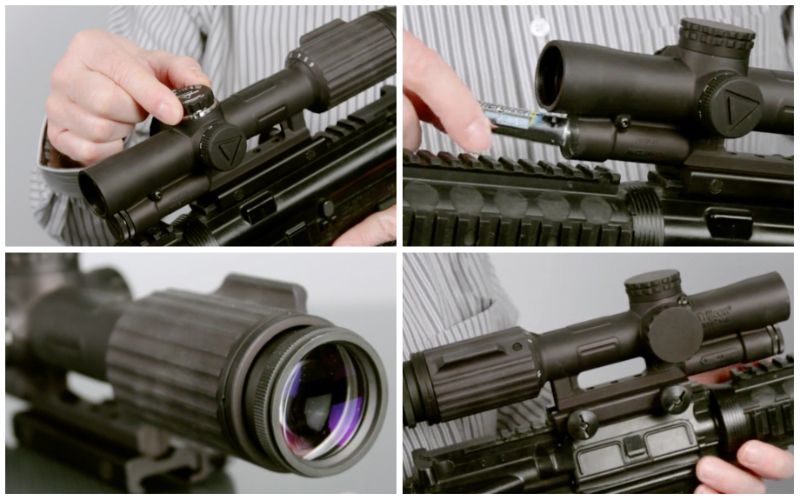
With a AA battery as the power source, it runs up to 700 hours when on brightness level 4. I like that the illumination knob has intermittent ‘off’ positions between brightness settings. For an unconventional riflescope battery type, it really needs that separate battery compartment for the AA.
As everyone knows, Trijicon is an expensive brand, but quality tends to match cost. I still think it's worth reminding you that to have the best on your AR will require a generous budget.
2. Vortex Razor HD Gen II-E 1-6X24 - Best Illuminated Reticle
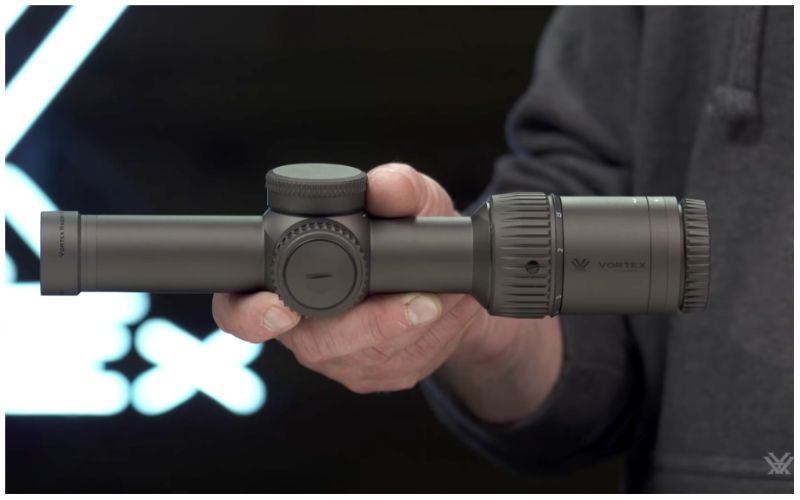
The Razor HD Gen II-E rifle scope is ideal for the AR/MSR platform. What does the "E" stand for? Enhanced. It has the favorite LPV power range of 1-6x to replace your red dot and magnifier combo on your AR-15.
Pros:
- Excellent glass quality
- 30 mm tube
- SFP/illuminated reticle
- Wide adjustment travel
- Wide diameter turrets
Cons:
- Price
The new model sheds the weight of its predecessor weighing in at only 21.5 oz - that's actually an average weight for an LPVO though some are lighter by a few ounces.
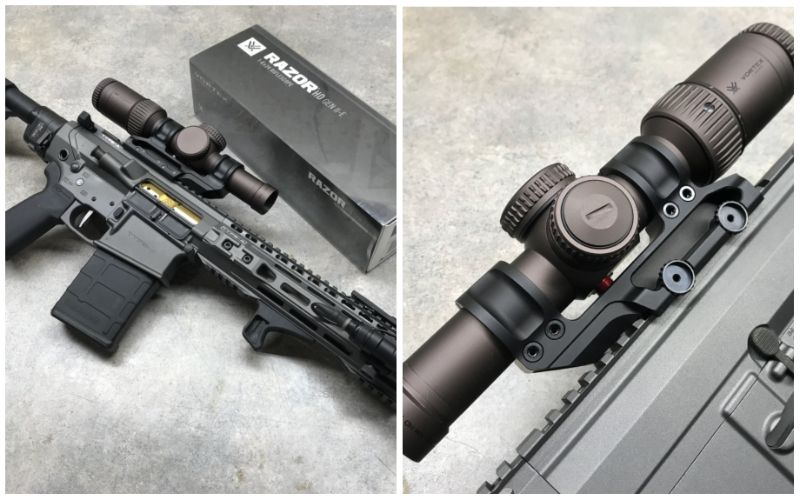
With a 30 mm, single-piece tube body, it's robust and allows for a colossal 150 MOA adjustment travel for both windage and elevation. 50 MOA revolutions and zero-resettable, wide diameter turrets allow for streamlined performance in any situation. I'd recommend the Razor HD for some professional applications, hunting, and competition.
With an SFP (second focal plane) reticle, the crosshairs don't change size regardless of magnification. Use the reticle to hold over out to 600 yards, though I'd strongly encourage using an app to see what your actual holds are and confirming them.
The BDC reticle has a center illuminated dot that I think is small at 0.5 MOA, but it does help with fast target acquisition to draw the eye to the center and allows for precision POI. Since this is a high-end scope, the illumination knob has a push/pull lock.
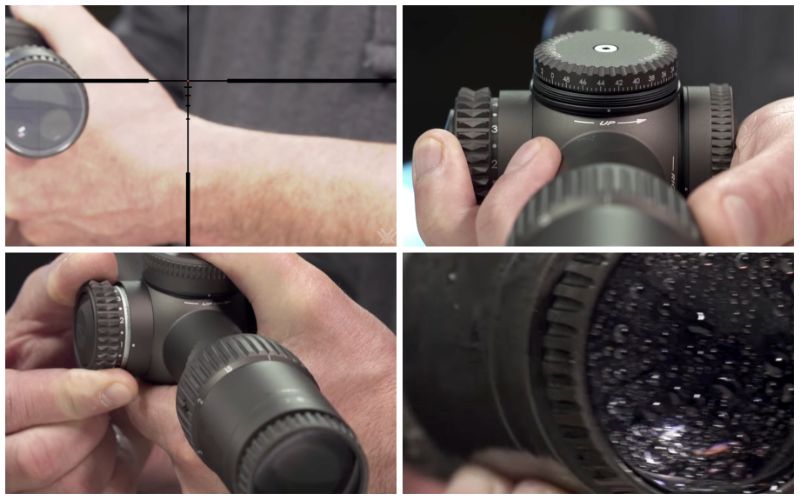
Glass quality is superb as the Razor HD has it all from an APO system to Optically Indexed Lenses, HD Lens elements, and more. With glass like that, I expect an exceptionally sharp, bright, and clean sight picture.
Although it's still expensive for most people, I think the Razor Gen II-E 1-6x is unparalleled in its price range.
If there's a scope you won't have buyer's remorse with, it's this one.
3. Trijicon ACOG 4X32 TA31F - Best Red Dot Combo
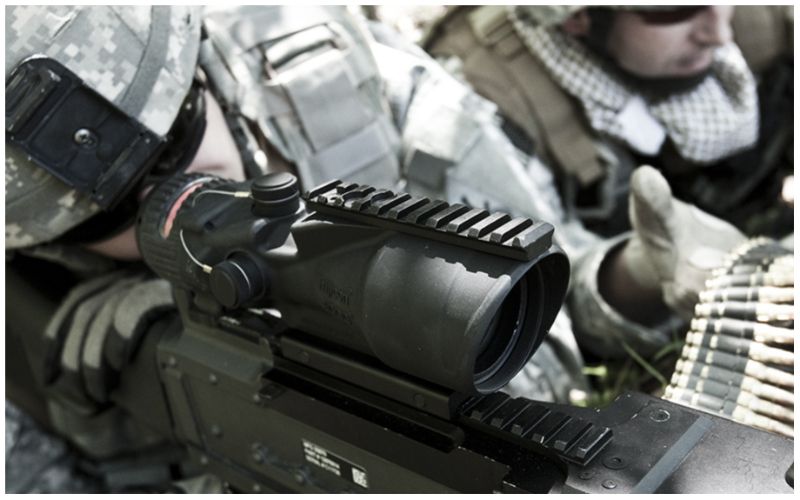
There's no way we could pass up the chance to feature a tried and true AR 15 sight, the ACOG. The Advanced Combat Optical Gunsight has been a U.S. military staple for more than a decade.
What does this fixed magnification sight offer the shooter that puts it at the top with best AR-15 red dot sights?
Pros:
- Combat proven
- Battery-free illumination
- BDC/ranging reticles
- Trijicon quality
- Use with both eyes open
Cons:
- Price
I still think that anything over $1000 is an expensive purchase, but Trijicon is one of those brands where you get what you pay for - quality.
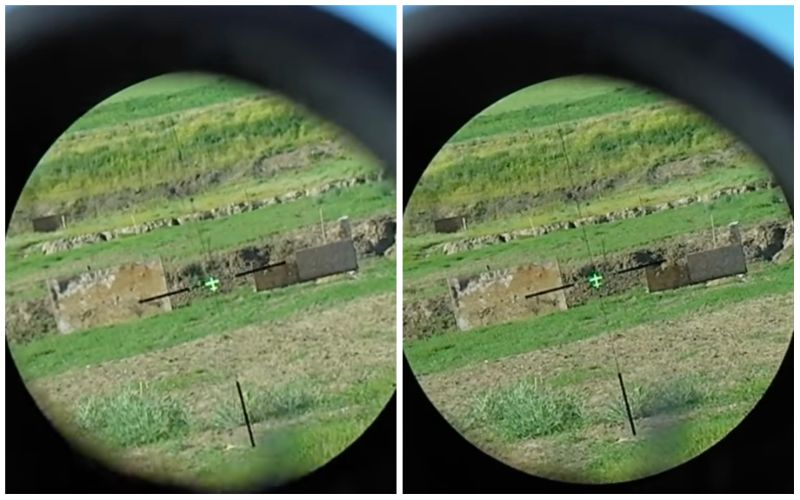
There are several illuminated reticles but the TA31F has the .223/5.56mm caliber-specific reticle with the red chevron and BDC crosshair for holdovers out to 800 meters. I think it's different but simple, uncluttered, and easy to use.
Though you don't need batteries to power the illumination, I reckon the concern is if it will be as bright as battery-powered illumination. It's not, though some have taken to taping the collector to dim the brightness - I'd think it must be really sunny?
The fiber optics run daytime illumination and adjusts the intensity based on ambient conditions. But, it typically needs direct sunlight on the collector to maintain the illumination, otherwise you may lose contrast on black targets with the now black reticle.
For lowlight/night use, tritium kicks in with a soft glow that shouldn't ruin your night vision or wash out the sight picture. Though the illumination seems like a drawback compared to red dots, its strengths lie in the dawn/dusk hours when you need some illumination but not too much - and not all red dots can dim enough for these golden hours.
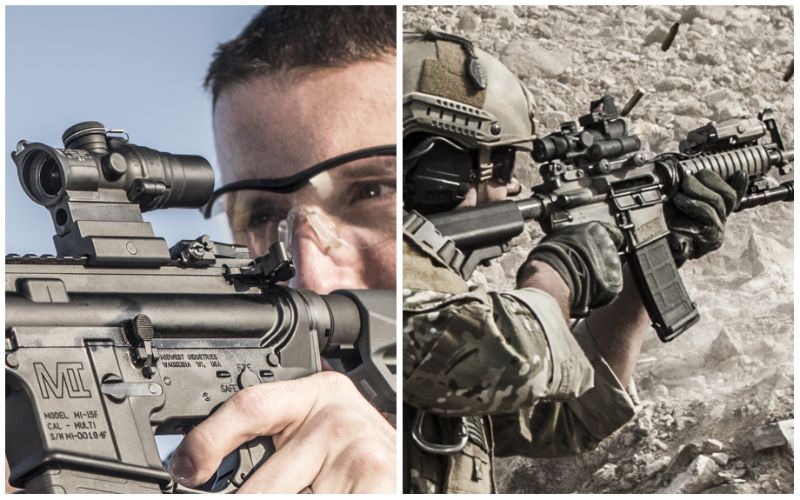
You can use the sight with both eyes open that allows for quick CQB use, but with 4x power, I'd recommend practicing because it will take some adjustment. However, you'll have to get around the unforgiving 1.5" especially if you're running and gunning it.
The ACOG 4x scope has been a long-time favorite, and the TA31F model has features made specifically for the AR platform especially considering that it comes with the TA51 mount.
As a tactical gunsight that was designed for military use, it sure lives up to its reputation for the civilian market.
4. EOTech Vudu 1-6x24 FFP – Best High-End LPVO
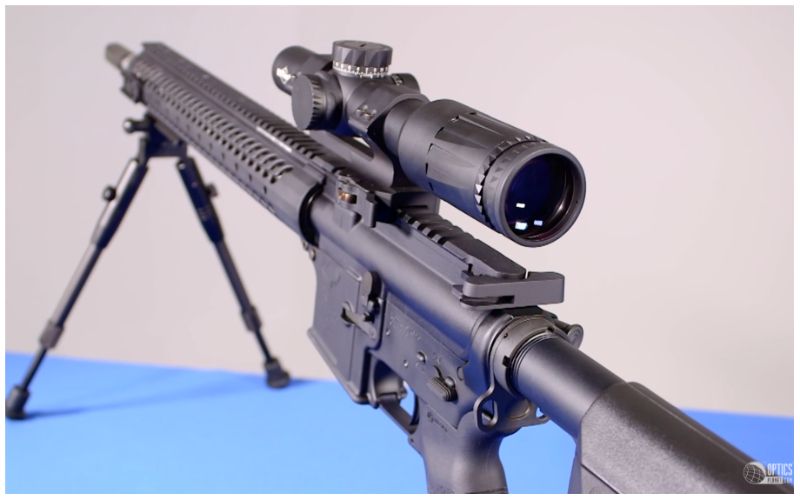
In a market where LPVOs are popular for the tactical carbine, the 1-6x reigns king with its CQB 1x magnification. Covered by the NoBS Warranty, you won’t need proof of purchase, and it’s fully transferable. That’s a warranty I can get behind considering the cost of a Vudu riflescope.
Pros:
- EOTech tough
- XC high-density optics
- CR2032 battery
- Multiple reticle options
- Made in Japan
Cons:
- No locking turrets
The Vudu has exposed turrets sitting on a 30mm tube that provides 29 mrad in elevation travel and 23 mrad in windage. Turrets adjust in .2 mrad increments. While extremely tactile and the scope tracks true, I'm a bit disappointed that they're not locking at this price point. This should be noted by those on patrol and hunters too.
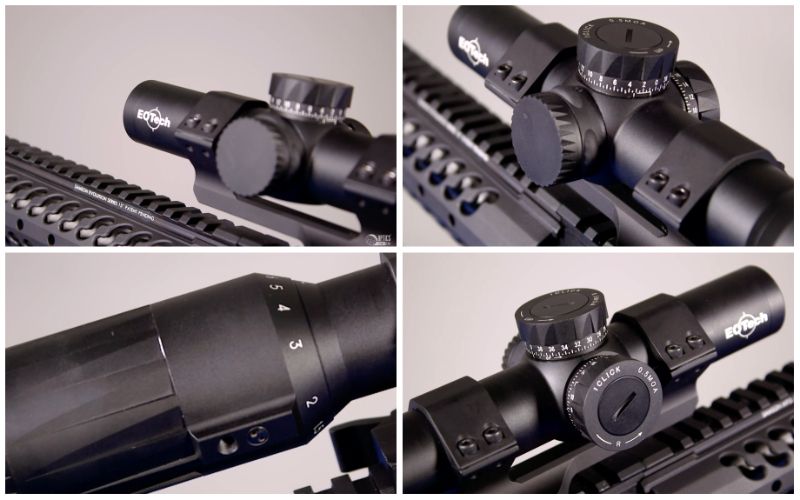
With 1-6x magnification, it has decent eye relief of 3.94-3.23” and can be used effectively with both AR15 and AR10 calibers. The Vudu has FFP reticles that are made for speed and are easy to see. They’re quite simple in design with minimalist markings for drop.
I like that the reticles are glass-etched, visible without illumination, and they feature EOTech’s speed ring, but they differ at the center. The SR1 is a ranging mrad reticle that is non-caliber specific. The SR2 has BDC drop calibrated for the 7.62 round whereas the SR3 is calibrated for the 5.56 round.
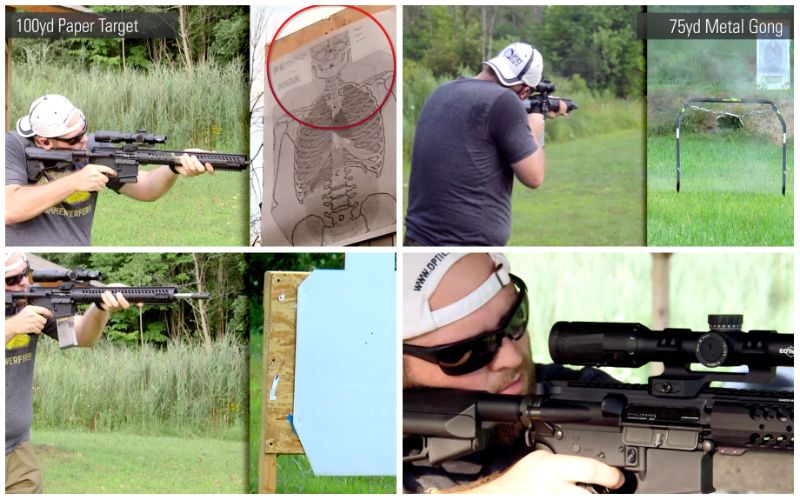
The scopes are O-ring sealed for water resistance, nitrogen-purged for fogproof protection, and are made in Japan. The optics are made with XC high-density, low dispersion glass with coatings to provide stunning clarity and resolution.
Powering illumination with a CR2032 coin-cell battery, it’s a lightweight power source that doesn’t add to the already hefty 20.1oz weight. In context, it’s not any heavier than alternative LPVOs as they are generally inherently heavy weighing in around 17-24 oz.
The Vudu marries magnification, true 1x both-eyes-open performance, red dot tech, and an FFP reticle into a scope and I think it does it skillfully with EOTech style.
5. Trijicon AccuPoint 1-4X24 TR24R - Best for Hunting
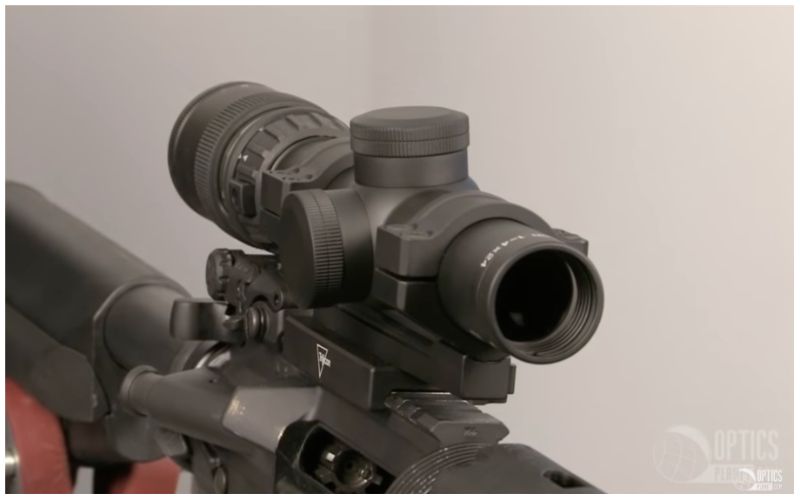
The AccuPoint may just be the ideal combo of a red dot and magnified optic in one. Who will benefit from one? A dangerous game hunter, someone who appreciates affordability, or a shooter who needs fast acquisition in difficult terrain or environments. Does this sound like you?
Pros:
- Price
- Battery-free illumination
- Glass-etched reticle
- Low magnification
- 90 MOA adjustment travel
Cons:
- Close-mid range only
I like the simplicity of the Triangle Post reticle. It's fast, and easy to use. If you're looking for sniper accuracy at extended ranges or for bullet drop compensating crosshairs, this isn't the reticle model for you.
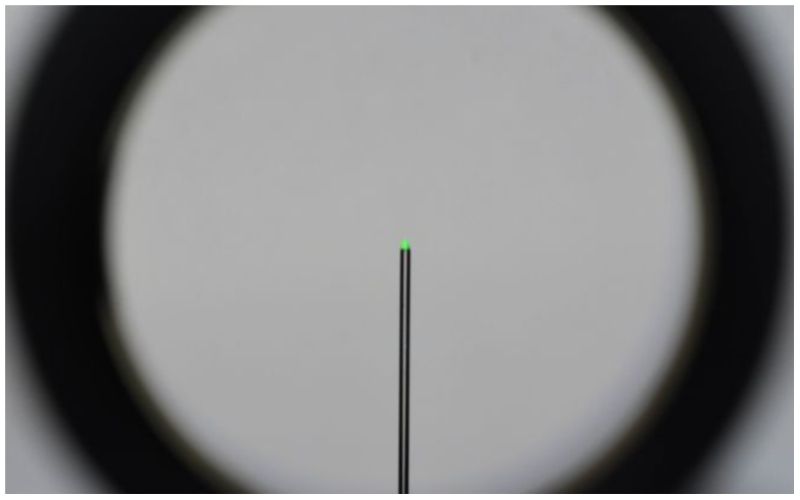
If you're looking to stay within your comfort zone of using a daylight illuminated reticle to move away from red dots in favor of LPV scopes, this AccuPoint does it.
You don't have to muck around with batteries or worry about illumination features failing you. The red triangle aiming point is powered by fiber optics and tritium for battery-free, illuminated benefits - no more worrying about battery life!
As you can guess, for a Trijicon scope under $1000, I deem it a favorite. It has Trijicon build quality behind it, a glass-etched reticle, 30 mm tube, and it's completely weatherproof.
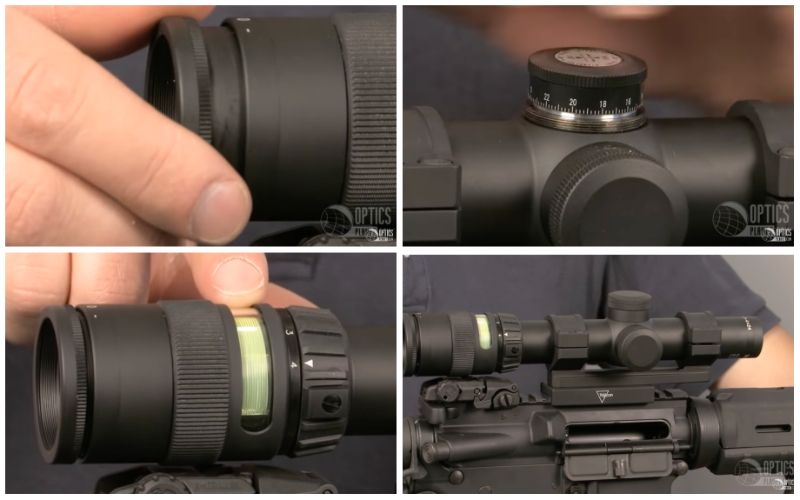
With 90 MOA of adjustment travel, you can dial out to extended ranges if you're in the mood to test your skill. But, as a 1-4x scope with a simple reticle, I recommend it for close to mid-range distances that's great for many types of hunting, target shooting, and CQB scenarios.
What else makes it an excellent scope for these applications? I praise its light weight at only 14.4 oz. Why tack on weight, extra magnification, and added cost when you can take down dangerous game, bad guys, and ping steel with the AccuPoint?
6. Steiner P4Xi 1-4X24 - Best 1-4X
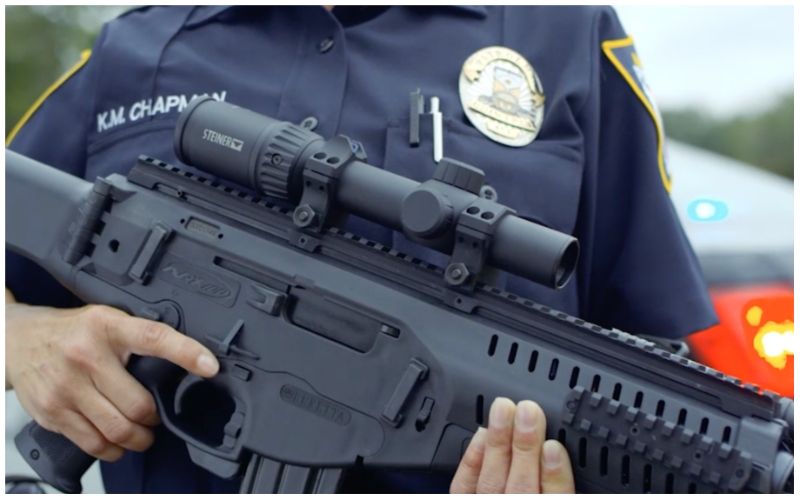
If you're looking for your first, high-quality LPV optic for duty-intended purposes and patrol use, the Steiner P4Xi is the best AR scope for you. It has everything going for it including a reasonable price, illuminated reticle, and true 1x magnification.
It was named Optic of the Year by a well-respected publication and received a Golden Bullseye Award by the NRA.
Pros:
- Price
- Illuminated reticle
- 5.56 reticle
- Low profile turrets
- Made in USA
Cons:
- Slightly mushy turrets
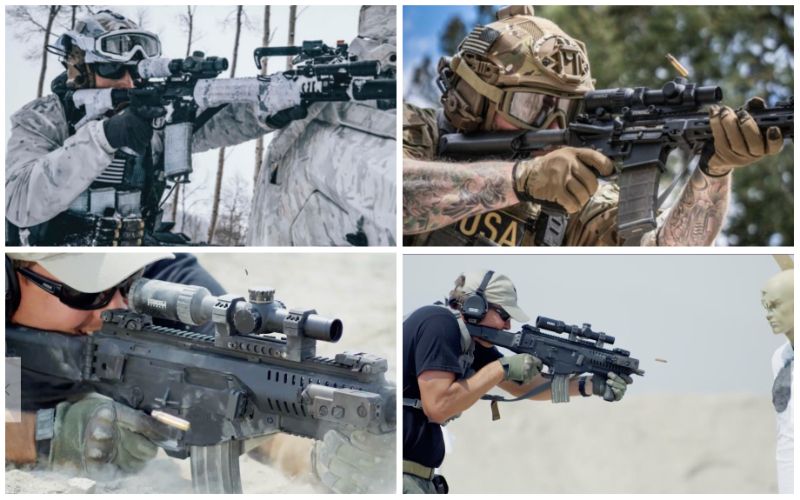
For some reason, the P4Xi is one of the best kept secrets in the LPVO market. I think a little more exposure is imminent. It's intended and designed as a law enforcement scope, but it's also used a lot in 3-gun competitions.
I like the center-dot illuminated P3TR reticle that is extremely popular. In my opinion, it doesn't overwhelm or distract the sight picture. With a 200 yard zero, the BDC hashmarks will reach out to 600 yards. It's designed for 5.56 mm 62 gr or 7.62 mm 175 gr loads - ideal for the AR-wielding shooter.
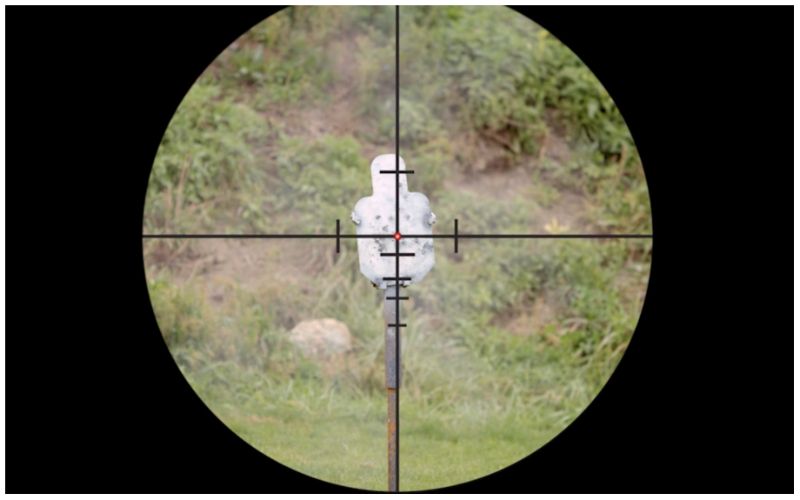
The illumination turret has "off" positions between each brightness setting. To maintain its effectiveness at all hours, illumination has 11 intensities: 5 daylight, 4 lowlight, and 2 night vision.
Elevation and windage adjustments are in MOA with .5 MOA clicks. While turret quality has said to be slightly mushy (not as crisp as some would compare to Vortex), just zero your scope and forget the rest out when holding over to 600 yards.
The Steiner AR-15 5202 scope is made in the USA, is affordable, and has all the right features to see you through patrol or your competition shoot.
7. Primary Arms Gen III 1-6X24 SFP ACSS - Best 1-6X for the Money
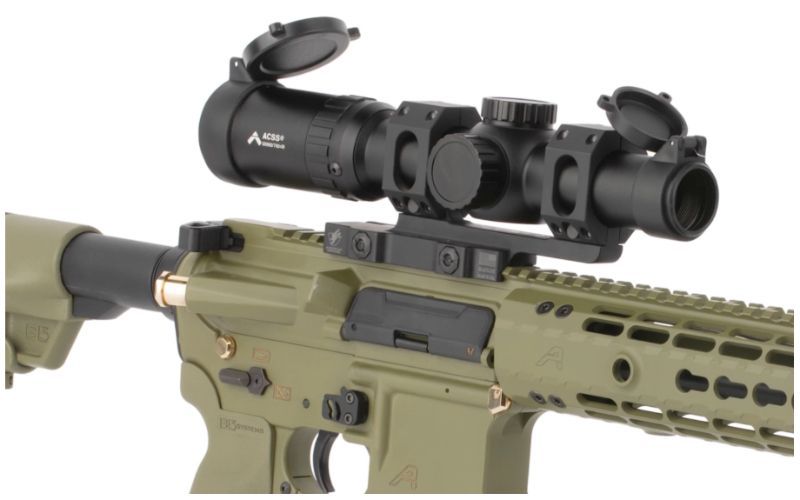
What would you give to own an LPV that has incomparable quality and features in its price class? Most would give months of research, work several overtime shifts, and hem and haw in frustrating indecision before pulling the trigger.
With the Primary Arms 1-6x24 scope, you don't need to do any of that!
Pros:
- Price
- SFP/illuminated reticle
- ACSS reticle
- Capped, low-profile turrets
- 30 mm tube
Cons:
- Quality control issues
It's all too easy to assume the best scopes come with the highest price tags and most of the time, it's true. However, this PA 1-6x scope is the best rifle scope in its price range for under $300. Without illusion, it's an entry-level LPV, but it has all the right features in all the right places.
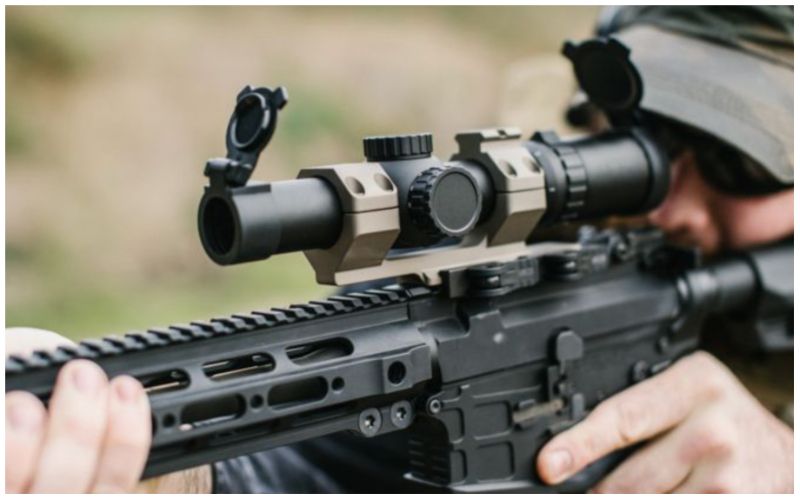
The illuminated SFP ACSS reticle is the major selling point. Though I love my FFP reticles, the ACSS reticle is in the rear focal plane, so it won't become too small or thin at 1x.
The Advanced Combined Sighting System Reticle (ACSS) is just that - a complete system. With it, you have BDC holdover hash marks that reach out to 800 yards compatible with 5.56, 5.45, and .308 cals, windage holdover points, moving target leads, and a vertical range estimation chart built in.
Although the glass-etched reticle system is full-on, I don't think it's to overwhelming nor obstructive. It's been improved with a center Chevron aiming point instead of the dot with a segmented circle surrounding it.
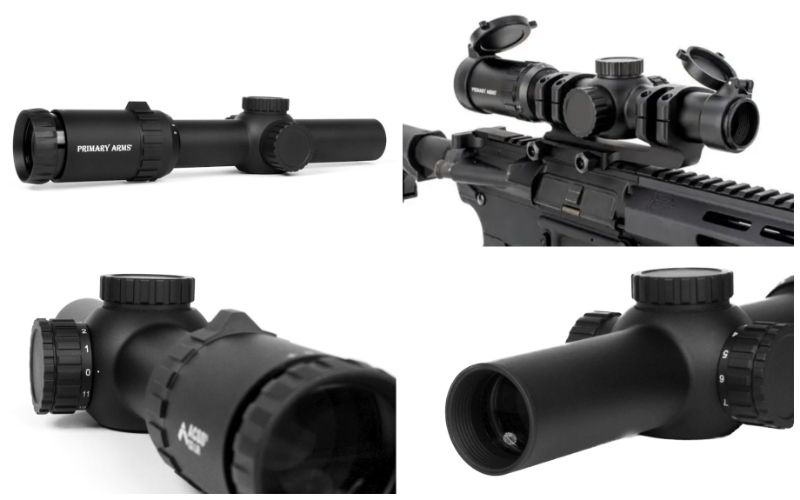
With clicks in 0.5 MOA, a 30 mm tube body, and capped, low profile turrets, it's obvious it's a scope that's intended for fast engagements in tactical, competition, and hunting applications.
However, quality control issues range from poor illumination to reticle issues that may require warranty coverage. Good thing it comes with a Lifetime Warranty PA will stand behind. I may be willing to give an arm and a leg to own one of the best and most affordable LPVOs around, but with this scope, I don't have to.
8. Vortex Optics Strike Eagle 1-6X24 - Best Value
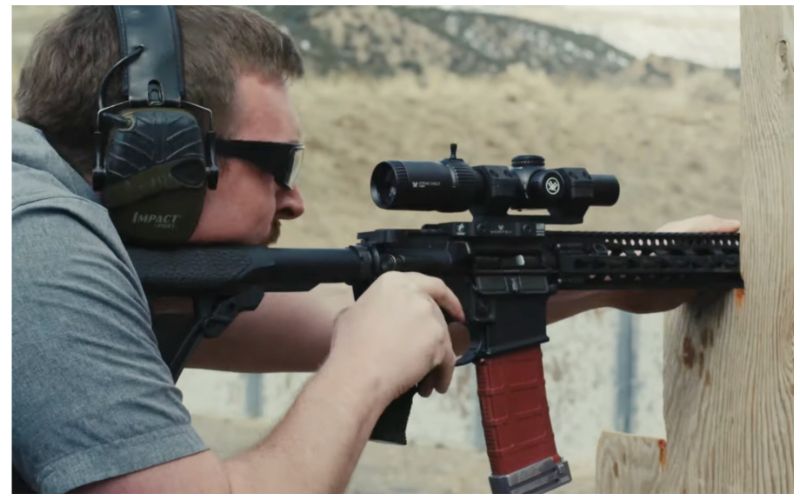
The Strike Eagle LPVO scopes from Vortex are incredibly popular scopes for first-time LPVO options for the AR-15. The Strike Eagle 1-8x is highly rated, but if you want to keep the budget as low as possible, the 1-6x model is the cost-conscious model.
Pros:
- Price
- Glass-etched reticle
- SFP reticle
- 0-600 yards
- 30 mm tube
Cons:
- Tight eyebox
The 1-6x LPVO has 3.5” of eye relief – very good specs on paper but the eyebox has been described to be tight at max 6x power. This makes it difficult for fast engagement at max magnification via offhand shooting. However, at the bench you have time to gain a consistent cheekweld and get within optical alignment.
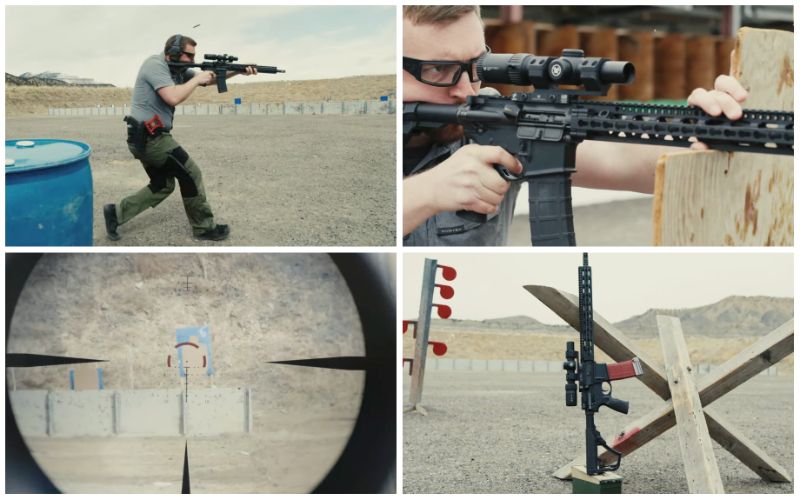
Speaking of the bench, the redesigned BDC3 reticle now only illuminates at the center dot and segmented horseshoe much like the EBR-8 reticle in daylight on the Strike Eagle FFP model that I personally field tested.
Given that it’s a SFP reticle, it does not change size throughout the power range and the illuminated portion is easily visible in the lowest powers. The EBR-8 in the FFP Strike Eagle does get very small - its performance more like a red dot than anything else.
However, you either love the BDC compensation out to 600 yards or you don’t as some find it too small and busy for offhand work.
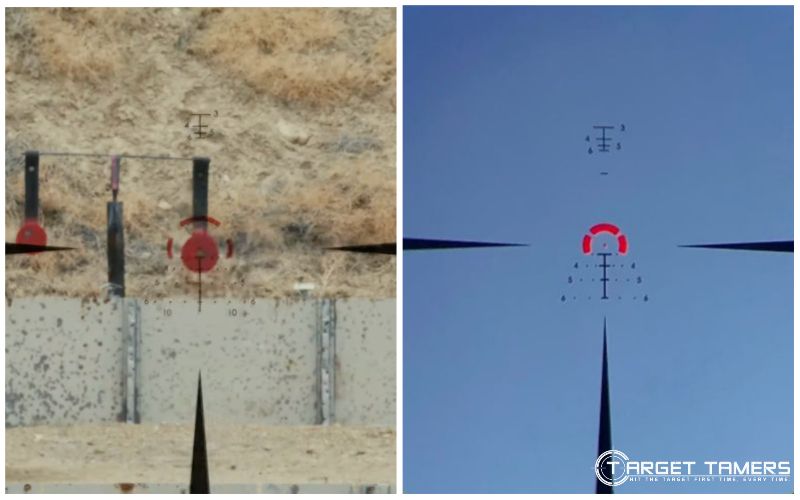
As an LPVO, it’s made to work with both-eyes-open at 1x magnification, and while definitely doable, there is some level of fish-bowl effect/distortion around the FOV at 1x. From personal experience, I've learned that you need to use the focus ring around the eyepiece to eliminate this effect when first focusing the scope. This will improve 1x performance greatly.
The SFP Strike Eagle runs at a budget price point for a LPVO, and it's covered with the VIP unconditional, lifetime warranty. I think it's obvious by now that there's a lot of value to be had.
9. Burris RT-25 5-25x56 - Best for Target Shooting
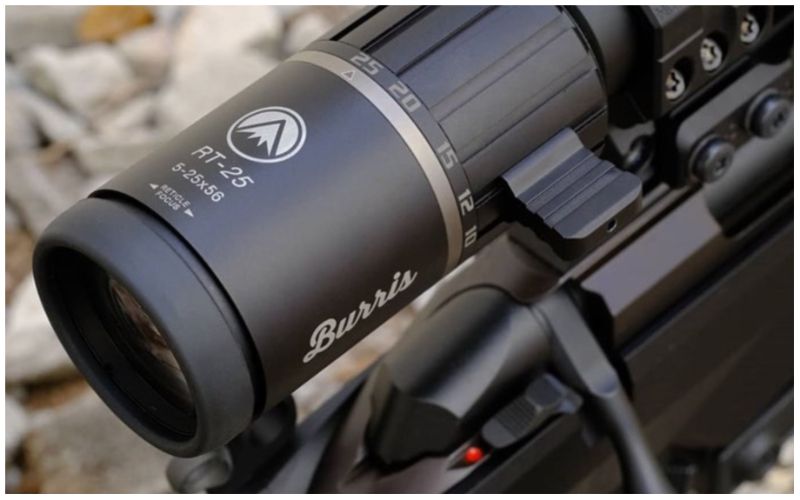
If you’re already accustomed to the MRAD-based system, there is essentially no learning curve involved. The RT-25 is made for MIL shooters, precision shooters, and long-range shooters. If you shoot, the Burris RT-25 is made for you.
Pros:
- Long-range
- SCR-2 MIL reticle
- FFP reticle
- Side focus
- Locking turrets
Cons:
- No MOA
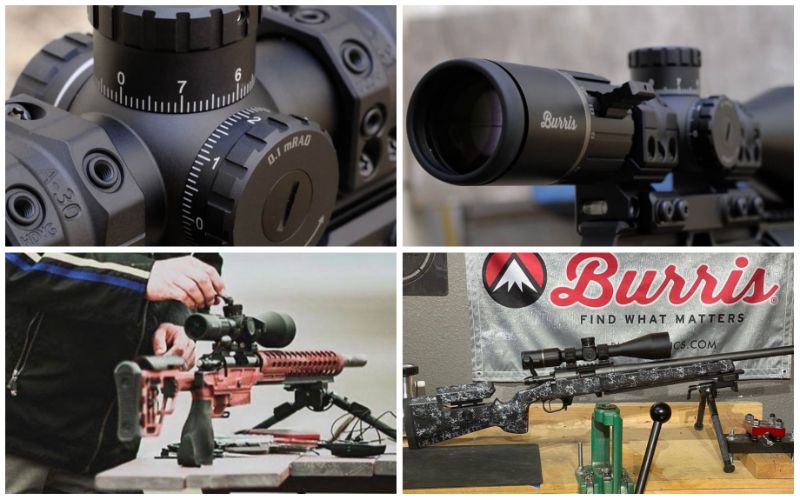
There are plenty of LPVO scopes well-suited to the AR platform, but some like to take their .223 loads out to max distances just because. I'd recommend the Burris RT-25 as a scope that can get it done.
I really like the high power range, optics to keep up, and MIL turrets and reticle that will get your AR-15 hitting steel at distances you couldn’t reach before. The RT-25 has a MIL tree style reticle that was designed by professional shooters and 65 MOA in travel to get you on target. It has plenty of room to dial in and hold over to make long range possible.
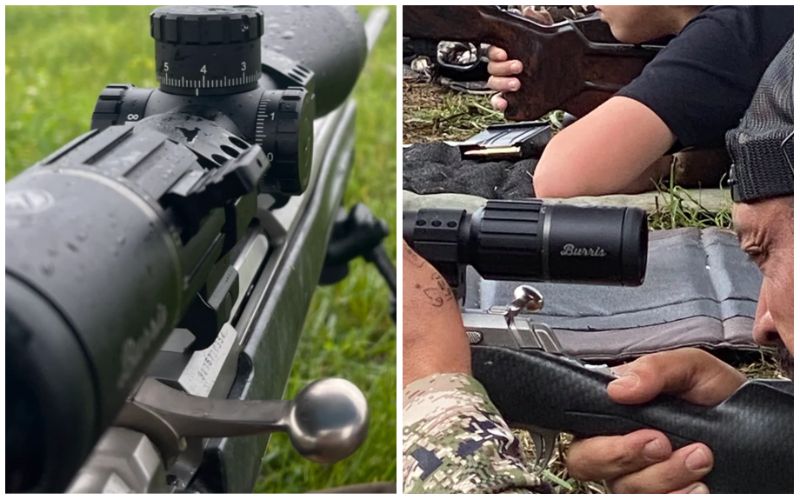
While setup for long-range use, the scope is extremely comfortable sitting in for competition use, hunting big game, and it also has the makings of being a great long-range varmint scope. I will also point out its hallmark tactical features such as a 30mm tube, locking turrets, zero stop, and a throw lever that can be repositioned as needed.
When you want distance from your AR, you need a long-range scope. When you need budget on your side, you need an RT-25 long-range scope. End of story.
10. Zeiss Conquest V4 3-12x56 – Best Under $1000
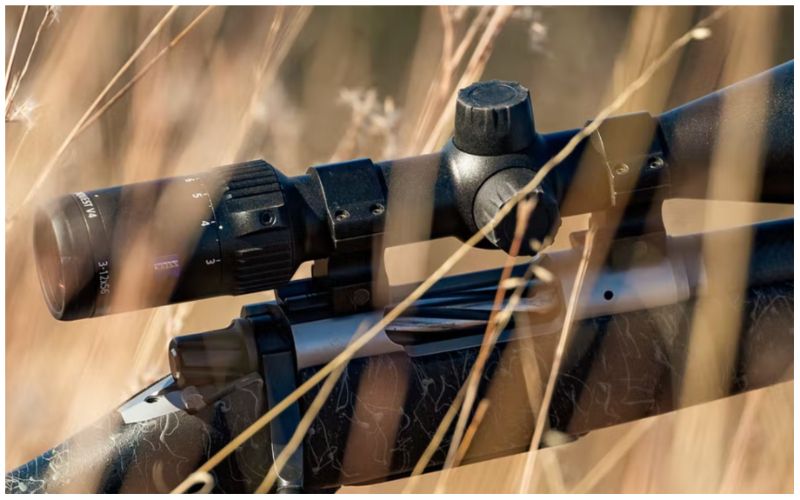
Overall, the Zeiss Conquest V4 is a highly recommended hunting scope and is likely seen on a bolt action rifle. Thinking broader, equip it to an AR-15 or AR-10 for predator and varmint hunting. As one of the top hunting scopes at a reasonable price point from Zeiss, the AR shouldn’t be left out.
Pros:
- Price
- Lowlight
- SFP reticle
- Lowlight
- Lightweight
Cons:
- Not made in Germany
While Zeiss is famously known for their German glass and manufacturing, in order to bring the Conquest series to market at an affordable price point, they are made in Japan. This may be a drawback for stalwart loyalists. Though, need I remind you, Japan is the manufacturing home to many mid-range to high-end optics brands known for top-shelf optical quality.
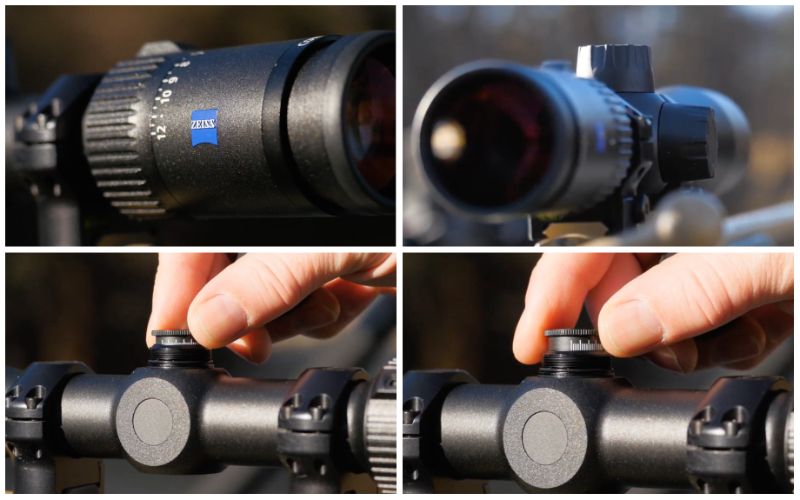
Beyond where it’s made, I'm finding it difficult to find fault with the solidly built and high-performing Conquest V4 scope. With its 3-12x configuration, it’s excellent for predator, big game, and target shooting applications. With a huge 56mm lens, I deem it a lowlight champ.
This Zeiss scope has illuminated dot (Z-Plex #60) and non-illuminated (Z-Plex #20) reticles. I'd personally opt for the illuminated reticle. I like they're very simple, clean reticles with thin but bold center crosshairs located in the second focal plane. Due to the boldness, it’s easily visible in last legal light but thin enough not to cover vitals. Turrets are in ¼ MOA adjustments with 70 MOA E/W total travel.
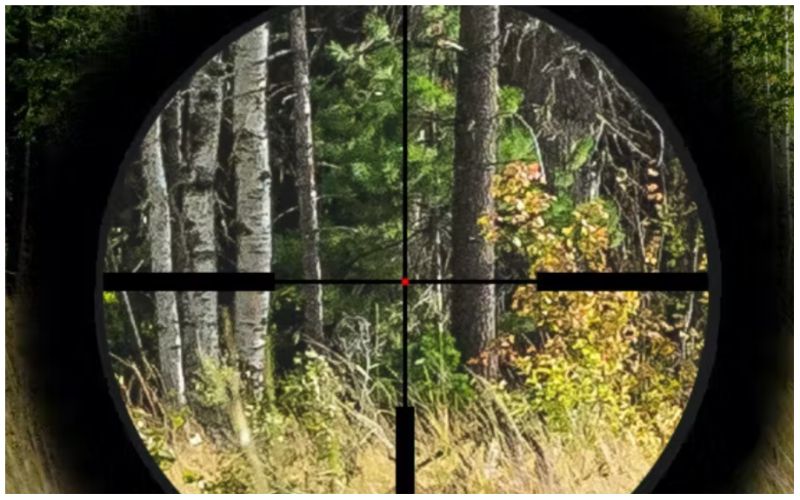
Even with the large objective and 30mm tube, the Conquest weighs in at 21.5 oz. It’s been harshly tested for shockproof and corrosion resistance having been exposed to 24 hours of saltwater spray, 1500 G-force recoil tests, and 90-minute continuous vibration tests. It’s submersible in up to 13ft of water for two hours and extreme temperature tested from -13 to 122-degrees F in a period of 15 minutes. In all, it'll last for everything I would ever put it through.
The Conquest V4 is a tough scope. Needless to say, it can handle sitting on an AR with ease. Though expensive as many mid-range scopes get, for a Zeiss, it counts as an affordable one.
11. Bushnell AR Optics 4.5-18X40 - Best Budget Option
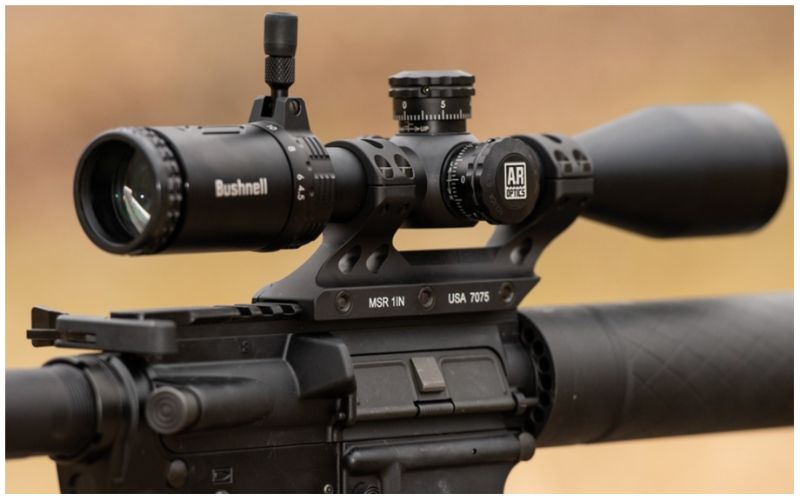
Unlike many scopes that do excellent on an AR-15, the AR Optics series by Bushnell are specifically designed for them. I think Bushnell makes things even better by making this series affordable. It may be what makes them so popular.
Pros:
- Price
- Side focus
- Exposed turrets
- Drop Zone 223 reticle
- Throw levers
Cons:
- Large BDC dots
The standard 4.5-18x40 scope is one of the best-selling models in the series and can easily be one of the top AR-15 scopes under $200. It has high power up to 18x, exposed MIL turrets, and the reticle is specifically calibrated for the .223 Rem.
You have 18 MIL of adjustment travel to get you zeroed at 100 yards and push those bullets out to around 500-600 yards. Since the reticle is in the SFP, you’ll need to change power once you’ve found your target. Bushnell includes both a short and long PCL (Power Change Lever) in the box for rapid power changes when it comes time to holdover - I like the long one thanks, it's easier and faster to throw.
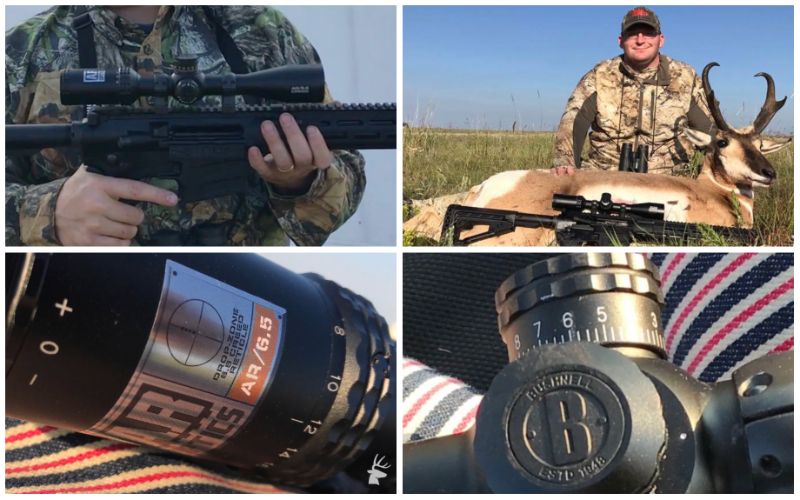
Although it has a BDC reticle to accommodate holding over, the dots (approx. 1 MOA in size) will obscure small targets at max ranges. It might not be your long-range varmint hunter, but it will do nicely for predators and big game, not to mention, AR500 steel targets.
With good glass, decent low-light performance, and a side focus with a minimum distance of 10-yards, the AR Optics scope offers a lot of versatility. I judge it as a favorite because it's accurate, affordable, and most importantly, right at home on your AR-15.
12. Burris XTR II 5-25x50 – Best for Long Range
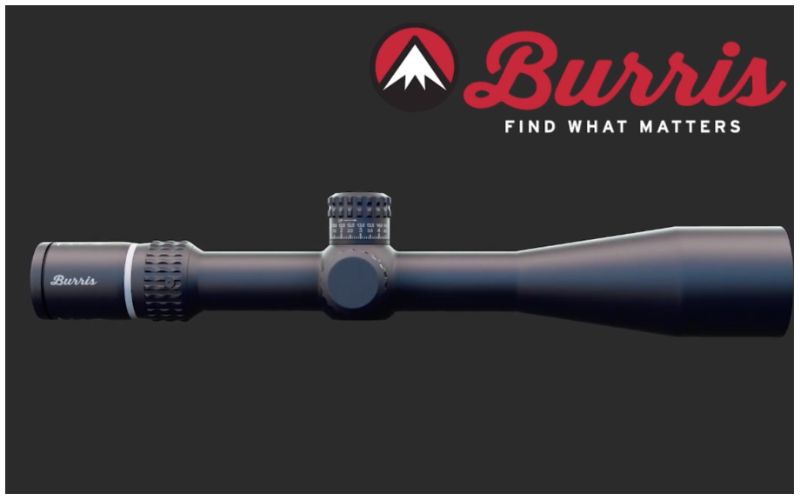
The XTR II 5-25x50 is a tactical and long-range competition riflescope. Various models within this line have come and gone but the SCR-MIL and SCR-MOA illuminated reticles have withstood the market and the test of time.
Pros:
- Long-range
- FFP reticles
- Zero Click Stop
- 34mm tube
- XT-100 knobs
Cons:
- Glass after 20x
The high power XTR II goes on sale often, and snagging it for under $1000 makes for a worthwhile buy. At this price point, there are things that can be forgiven such as its optical struggles at max 25x power. Brightness and clarity are lost, and illumination can be difficult to see in daylight bright conditions.
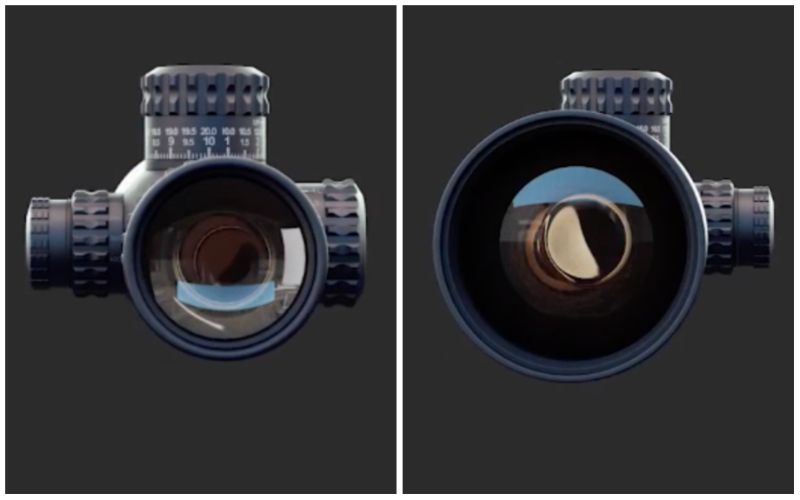
However, with 11 brightness settings, it will perform well in lowlight conditions. Unlike some of Burris’ reticles where only the center dot is illuminated, I really like that the SCR-MIL and SCR-MOA reticles have extended illumination encompassing a well-balanced portion of the crosshairs.
SCR stands for Special Competition Reticle. They are in the FFP and are simple, uncluttered and easy to use. Both models have XT-100 click knobs for 100 clicks per rotation and feature a Zero Click Stop for a precise, hard return to zero - I love the zero stop. The mil-based scope has 0.1 mil adjustments and the moa scope has ¼ moa adjustments.
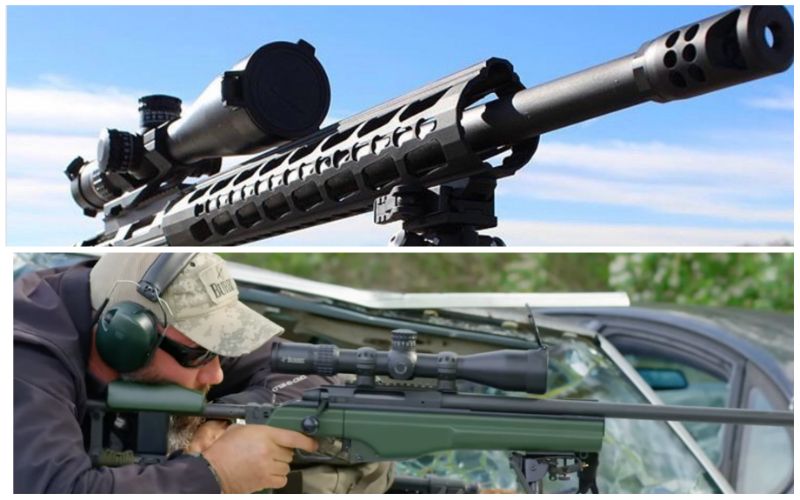
The 34mm tube allows for more adjustment travel to push beyond 1000 yards, and it does make things a little more expensive given that you must use 34mm rings. The XTR II is a heavy scope weighing in at 32.10 oz and is 16.31” long.
It takes a CR2032 battery to power illumination though the reticle can be seen without it which I think is very important for some terrains and light conditions. Its minimum focusing range is 50 yards via the stiff side focus that I've heard will break in after a short time.
There’s a lot to like about the Burris competition and tactical scope and a few things you may need to evaluate. But with the Forever No Questions Asked Warranty to boot, I recommend it as a high-performing scope if you can get it for under $1000.
What to Look for in the Best AR-15 Scopes
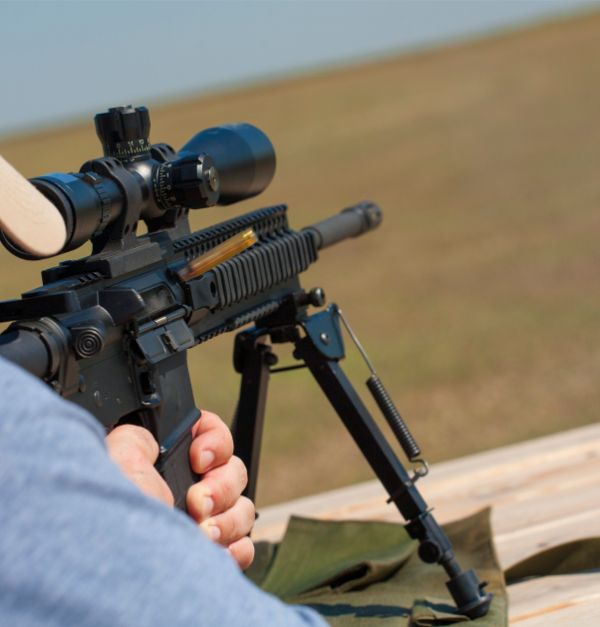
How do you narrow down what's most important in a scope when there are multiple budgets and shooting contexts to consider? The answer: we don't, but you must.
Choose the scope that has the right combination of features for your shooting needs. Is coyote hunting your primary shooting activity? You will be best to consider scopes ideal for AR-15 coyote hunting. Are you going to be out after dark? You will need to check out AR-15 scopes with night vision.
Too many times we see someone return or rap on a quality scope because they expected or wanted more of something the scope didn't claim to have in the first place. What you need will very likely look different to someone else's needs, but you're not buying a scope for them, you're buying it for yourself.
The best scope you can mount to your AR/MSR platform is the one you recognize as best-suited for your needs. What features do we recommend you consider? We're glad you asked!
Budget
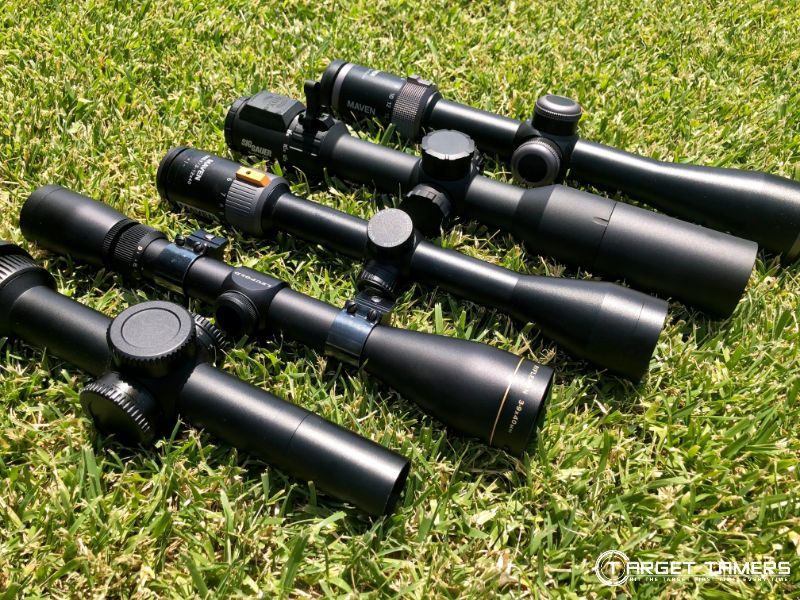
Not debatable is the fact that your budget is "the" ultimate deciding factor in what scope you buy for your AR-15. Many drool and secretly envy those who can spend more than $500 on a scope. Most of the time, shooters are looking for the affordable option while still having a chance to buy something high quality, name brand if possible, and with a bunch of honest reviews behind it.
It's easy to over-spend or think you need this or that in an AR scope.
Stick to your guns and choose the scope with the combination of features that has what you need so you don't pay for features you don't. That's how you save money and up value in your buy. The gems are out there, just filter through our lineup or AR-15 scopes to see what fits your budget best.
| Product | Price |
|---|---|
| Trijicon VCOG | Under $2500 |
| Vortex Razor HD Gen II-E | Under $1500 |
| Trijicon ACOG | Under $1500 |
| EOTech Vudu FFP | Under $1500 |
| Trijicon TR24R AccuPoint | Under $1000 |
| Steiner P4Xi | Under $1000 |
| Primary Arms Gen III | Under $300 |
| Vortex Strike Eagle SFP | Under $400 |
| Burris RT-25 | Under $800 |
| Zeiss Conquest V4 | Under $1000 |
| Bushnell AR Optics | Under $200 |
| Burris XTR II | Under $1000 |
AR-15 Scope Magnification
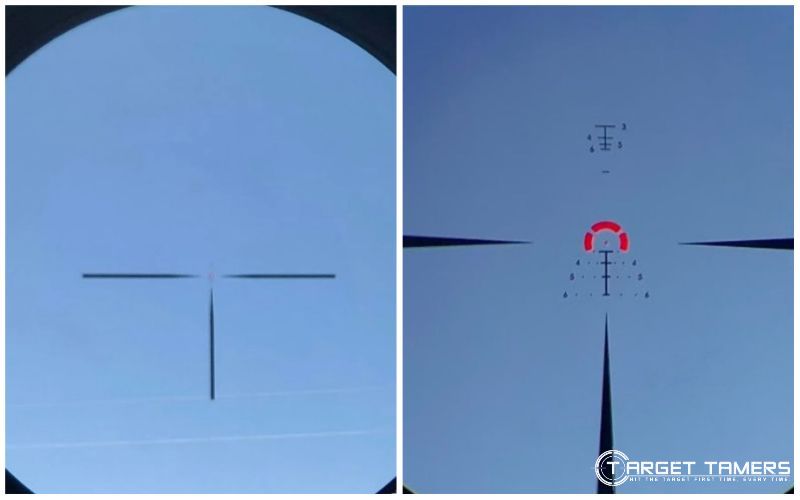
If there's a feature that can be as versatile as its variable nature, it's magnification. Many looking to replace their AR-15 red dot sight with an LPVO still want to retain point-blank range, close range, and rapid target acquisition benefits. Scopes with true 1x should be able to co-witness with iron sights and provide the same POV (Point of View) as a red dot. LPVOs that fit the bill come in 1-4x, 1-6x, 1-8x configurations.
However, not everyone shooting an AR is looking for CQB, duty, tactical, or close-range hunting benefits from an LPVO that low power provides. Various MSR platforms have cartridges capable of stretching the distance 400, 600, 800 yards plus some.
Higher power optics can help to identify where you want to hit the target. Additionally, the further the distance and the smaller the target is a situation requiring high magnification. It's not uncommon to find long-range scopes on AR platforms with various power range configurations of 3-9x, 4-16x, 6-24x, and more.
| Product | Type | Magnification | Objective Lens (Aperture) | Common Use |
|---|---|---|---|---|
| Trijicon VCOG | LPVO | 1-6X | 24 mm | Close-mid range |
| Vortex Razor HD Gen II-E | LPVO | 1-6X | 24 mm | Close-mid range |
| Trijicon ACOG | Fixed scope | 4X | 32 mm | Close range |
| EOTech Vudu FFP | LPVO | 1-6X | 24 mm | Close-mid range |
| Trijicon TR24R AccuPoint | LPVO | 1-4X | 24 mm | Close range |
| Steiner P4Xi | LPVO | 1-4X | 24 mm | Close range |
| Primary Arms Gen III | LPVO | 1-6X | 24 mm | Close-mid range |
| Vortex Strike Eagle SFP | LPVO | 1-6X | 24 mm | Close-mid range |
| Burris RT-25 | Scope | 5-25X | 56 mm | Mid-long range |
| Zeiss Conquest V4 | Scope | 3-12X | 56 mm | Close-long range |
| Bushnell AR Optics | Scope | 4.5-18X | 40 mm | Close-long range |
| Burris XTR II | Scope | 5-25X | 50 mm | Close-long range |
Reticle
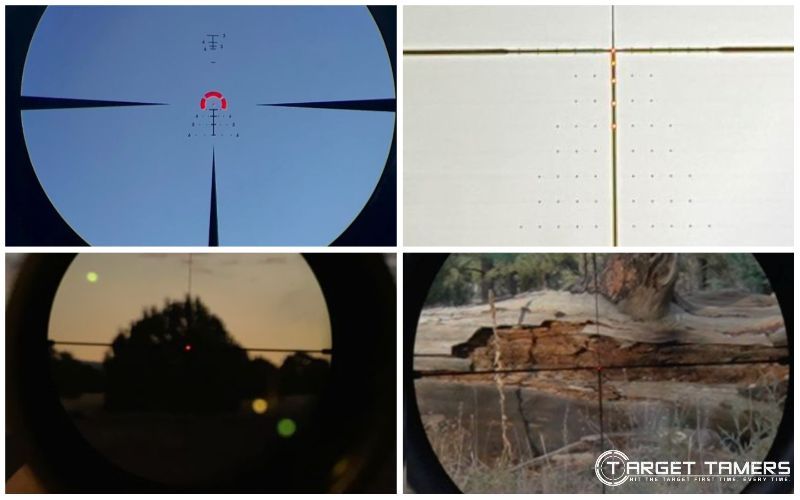
This may be one of the most important features to muse over when considering AR optics.
You may want to look for a riflescope reticle that is:
- Illuminated
- Has BDC/trajectory compensating dots/hashmarks
- Various crosshair styles including duplex, Christmas-tree style, etc.
- Simple with a dot, chevron, or circle pattern
- Calibrated for a specific cartridge or caliber
Again, being activity-specific will help to narrow down what type of reticle will be best for you. Simple, uncluttered, illuminated reticles are excellent options for rapid target acquisition in close quarters for fast response situations. Complicated reticles with windage and BDC holdover points may better suit a hunter or long-range shooter.
| Product | Reticle | Other Reticle Options |
|---|---|---|
| Trijicon VCOG | Horseshoe dot crosshair .223 | Yes |
| Vortex Razor HD Gen II-E | JM-1 BDC | Yes |
| Trijicon ACOG | BAC M-16/AR15 Donut | Yes |
| EOTech Vudu FFP | SR1 | Yes |
| Trijicon TR24R AccuPoint | BAC Triangle post | Yes |
| Steiner P4Xi | P3TR | Yes |
| Primary Arms Gen III | ACSS | No |
| Vortex Strike Eagle SFP | AR-BDC3 (MOA) | No |
| Burris RT-25 | SCR 2 | Yes |
| Zeiss Conquest V4 | Reticle 20 (Z Plex) | Yes |
| Bushnell AR Optics | Drop Zone 223 | No |
| Burris XTR II | SCR | Yes |
FFP VS SFP
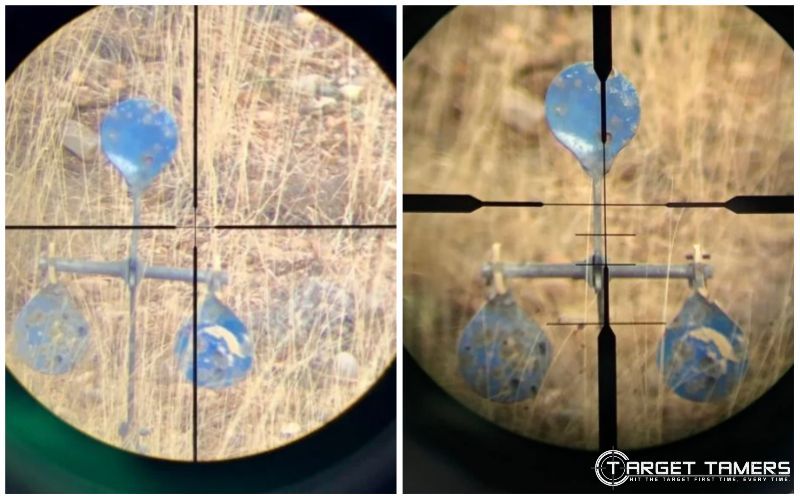
First or front focal plane reticles are typically a high-end feature that usually means more cost. Shooters appreciate being able to holdover regardless of magnification whereas second or rear focal plane reticles can only be used for holdovers at max magnification.
The downside to FFP reticles is they are often too small and thin to see at low power whereas SFP reticles retain their size their regardless of magnification.
This is a subjective feature that you need to know about as it can enhance the way you shoot and directly affects your scope budget.
| Product | Reticle Type | Illumination |
|---|---|---|
| Trijicon VCOG | FFP | Yes |
| Vortex Razor HD Gen II-E | SFP | Yes |
| Trijicon ACOG | SFP | Yes |
| EOTech Vudu FFP | FFP | Yes |
| Trijicon TR24R AccuPoint | SFP | Yes |
| Steiner P4Xi | SFP | Yes |
| Primary Arms Gen III | SFP | Yes |
| Vortex Strike Eagle SFP | SFP | Yes |
| Burris RT-25 | FFP | No |
| Zeiss Conquest V4 | SFP | No |
| Bushnell AR Optics | SFP | No |
| Burris XTR II | FFP | Yes |
Eye Relief

We all know enough eye relief is extremely important to avoid scope eye. But, avoiding the tell-tale sign that your scope is mounted in the wrong position or it doesn't offer enough eye relief is just one factor to consider.
Having enough eye relief ensures you can take advantage of the full field of view (FOV) and minimize eye fatigue. Following moving targets and long observation through a scope requires generous eye relief. Adjustable eye relief may also be very beneficial to those with adjustable stocks.
| Product | Eye Relief | Parallax Type | Parallax Range | Adjustment Value |
|---|---|---|---|---|
| Trijicon VCOG | 4 inches | Fixed | 100 yards* | 0.25 MOA |
| Vortex Razor HD Gen II-E | 4 inches | Fixed | 100 yards | 0.5 MOA |
| Trijicon ACOG | 1.5 inches | Fixed | 100 yards* | 0.5 MOA |
| EOTech Vudu FFP | 3.94 – 3.23 inches | Fixed | 100 yards* | 0.2 MIL |
| Trijicon TR24R AccuPoint | 3.2 inches | Fixed | 100 yards | 0.25 MOA |
| Steiner P4Xi | 4 – 3.5 inches | Fixed | 100 yards | 0.5 MOA |
| Primary Arms Gen III | 3.5 – 3.3 inches | Fixed | 100 yards | 0.5 MOA |
| Vortex Strike Eagle SFP | 3.5 inches | Fixed | 100 yards | 0.5 MOA |
| Burris RT-25 | 3.6 – 3.3 inches | Side focus | 15 yards – infinity | 0.1 MIL |
| Zeiss Conquest V4 | 3.54 inches | Fixed | 100 yards | 0.25 MOA |
| Bushnell AR Optics | 3.6 inches | Side focus | 10 yards – infinity | 0.1 MIL |
| Burris XTR II | 4.25 – 3.50 inches | Side focus | 50 yards - infinity | 0.25 MOA |
*Parallax setting unverified
Mounts, Extended Mounts, Rings & More
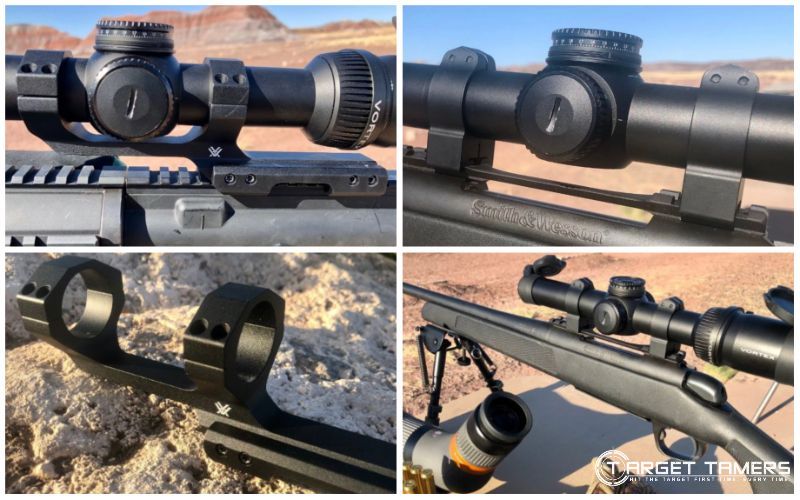
Do you want your scope to clear your iron sights? Do you need an extended mount? Do you have the right size rings? Is a quick release/detach mount a realistic feature worth paying more for?
Because the AR platform is extremely modular, you will want to consider what accessories will best suit your rifle and scope system. Some scopes come with included mounts and rings. Most of the time, you're going to have to save room in your optics budget for the necessary accessories.
| Product | Tube Size | Dimensions (Scope Length) | Weight |
|---|---|---|---|
| Trijicon VCOG | 34 mm | 10.5 inches | 23.2 oz |
| Vortex Razor HD Gen II-E | 30 mm | 10.1 inches | 21.5 oz |
| Trijicon ACOG | N/A mount included | 6.71 inches | 15.8 oz |
| EOTech Vudu FFP | 30 mm | 10.63 inches | 20.1 oz |
| Trijicon TR24R AccuPoint | 30 mm | 10.3 inches | 14.4 oz |
| Steiner P4Xi | 30 mm | 10.3 inches | 17.3 oz |
| Primary Arms Gen III | 30 mm | 10 inches | 16.9 oz |
| Vortex Strike Eagle SFP | 30 mm | 10.5 inches | 18.5 oz |
| Burris RT-25 | 30 mm | 14.3 inches | 24.8 oz |
| Zeiss Conquest V4 | 30 mm | 14.5 inches | 21.5 oz |
| Bushnell AR Optics | 1 inch | 12 inches | 19.4 oz |
| Burris XTR II | 34 mm | 16.31 inches | 32.10 oz |
AR-15 Rifle & Scope: The Versatile Choice
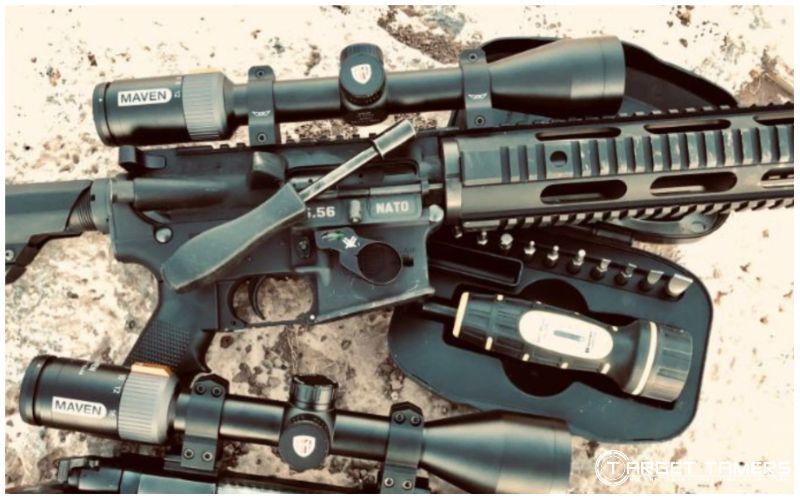
As you build and upgrade your AR-15/MSR over time, you might find you'll need to do the same with your scope as your needs change. Not every scope is a one-size-fits-all option, and neither should your approach be the same.
Size, weight, weatherproofness, and glass quality are just as important to keep in mind as the suggested recommendations listed above. It can get daunting trying to think of every facet to research, so if you can get out there and test drive some different scopes, more power to you and your buy.



